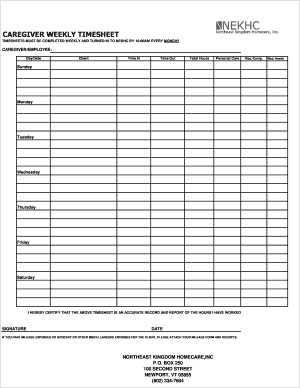Being a caregiver is a rewarding but challenging job. Whether you are taking care of a family member or working as a professional caregiver, it is important to maintain a structured routine to ensure the best care possible. One tool that can greatly assist in this process is a caregiver timesheet. In this article, we will explore the benefits of using a caregiver timesheet, how to effectively use one, and why it is crucial for both the caregiver and the care recipient.
What is a Caregiver Timesheet?
A caregiver timesheet is a document or electronic tool that allows caregivers to track their daily activities, including the time spent on various caregiving tasks. It serves as a record of the caregiver’s work hours and the specific tasks performed during each shift. It can also include important information such as medication schedules, meal plans, and any changes in the care recipient’s condition. The timesheet provides an organized and detailed account of the caregiver’s responsibilities and helps ensure that all necessary tasks are completed.
Why Should Caregivers Use a Timesheet?
Using a caregiver timesheet offers numerous benefits for both the caregiver and the care recipient. Here are some of the key reasons why caregivers should consider implementing this tool:
- Effective Time Management: A timesheet helps caregivers stay organized and manage their time efficiently. By recording their activities, caregivers can identify any gaps in their schedule and allocate time for specific tasks, such as personal care, meal preparation, or medication administration.
- Improved Accountability: A timesheet provides a clear record of the caregiver’s activities, allowing them to be held accountable for their actions. This can be particularly important in professional caregiving settings, where supervisors or families may review the timesheets to ensure that all tasks are completed as required.
- Better Communication with Healthcare Professionals: A timesheet can serve as a valuable communication tool between caregivers and healthcare professionals. By documenting the care provided, including any changes in the care recipient’s condition, caregivers can provide accurate and detailed information to doctors, nurses, or therapists, enabling them to make informed decisions about the care recipient’s treatment plan.
- Peace of Mind for Families: For family caregivers, a timesheet can provide peace of mind by documenting the care provided to their loved one. It allows them to monitor the activities and ensure that the necessary tasks are being carried out. Additionally, it can serve as a record of the care provided, which may be useful for insurance or legal purposes.
- Identifying Patterns or Issues: By reviewing the timesheets over time, caregivers and healthcare professionals can identify any patterns or issues that may arise. For example, if a care recipient consistently experiences discomfort or agitation during a certain time of day, it may indicate the need for adjustments in the care plan.
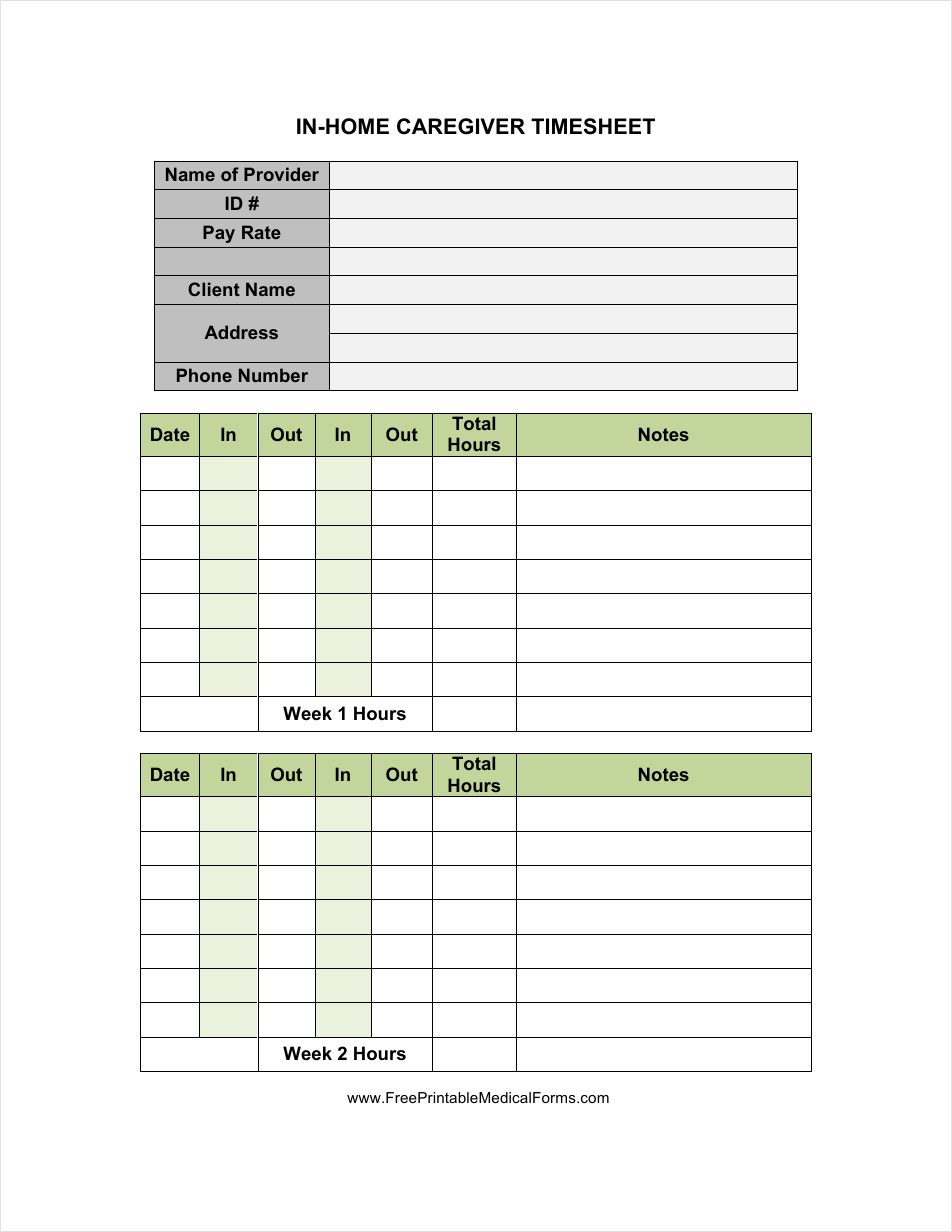
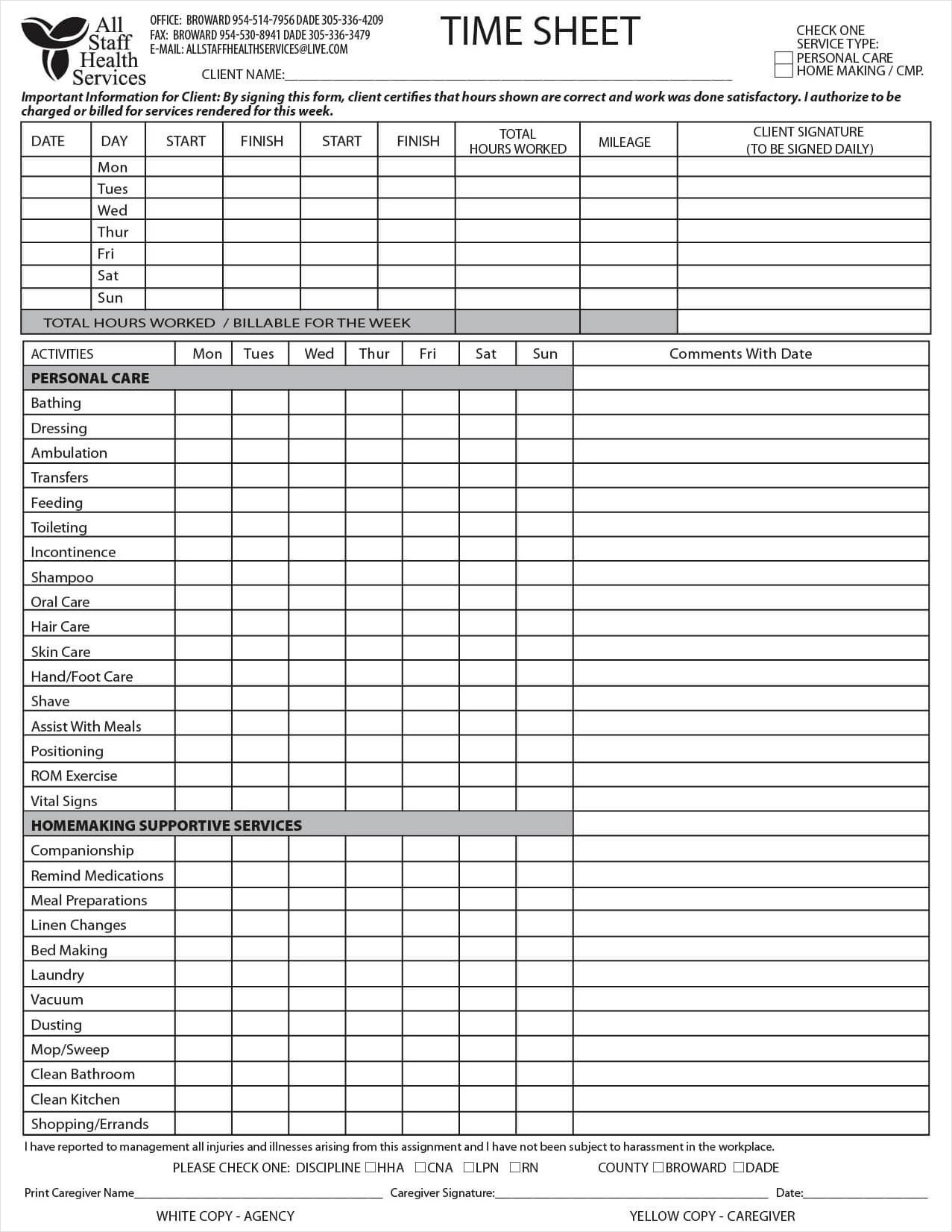
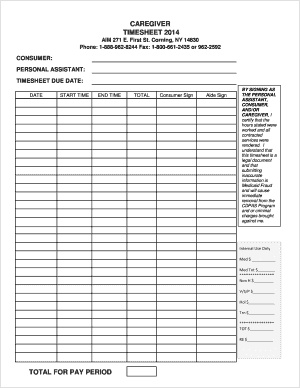
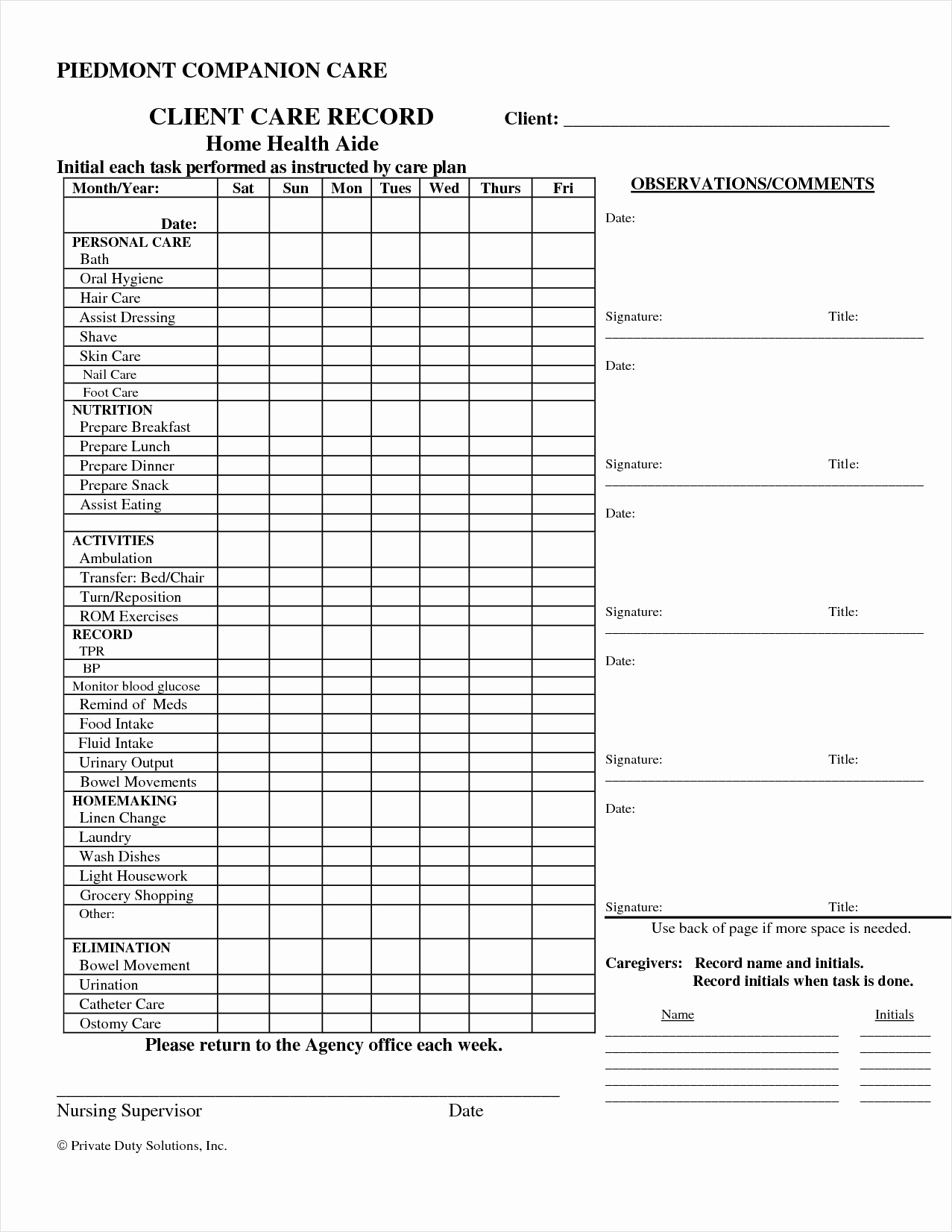
How to Use a Caregiver Timesheet
Using a caregiver timesheet effectively requires a structured approach. Here are some steps to follow:
1. Choose the Right Format
There are various formats available for caregiver timesheets, including paper-based templates, digital spreadsheets, or specialized caregiver apps. Choose the format that works best for you and your caregiving situation.
2. Record Daily Activities
At the start of each shift, record the date, start time, and end time. Then, throughout the day, document the specific tasks performed, such as medication administration, meal preparation, personal care, or companionship. Be sure to include any changes in the care recipient’s condition or any notable events that occurred.
3. Be Specific and Detailed
When recording activities, be as specific and detailed as possible. Include important information such as the dosage and timing of medications, the types of meals prepared, or any challenges or concerns encountered during the shift. This level of detail will provide a comprehensive overview of the care provided.
4. Review and Reflect
Regularly review the timesheets to identify any patterns or issues. Reflect on the care provided and consider any adjustments that may be necessary. Discuss any concerns or observations with healthcare professionals or supervisors to ensure the best care possible.
The Benefits of Using a Caregiver Timesheet
The benefits of using a caregiver timesheet are numerous and can greatly enhance the caregiving experience. Some of the key advantages include:
- Improved organization: A timesheet helps caregivers stay organized and ensures that all necessary tasks are completed.
- Enhanced communication: Timesheets can serve as a communication tool between caregivers, care recipients, and healthcare professionals.
- Better time management: By tracking their activities, caregivers can manage their time more effectively and allocate sufficient time for each task.
- Increased accountability: Timesheets provide a clear record of the care provided, allowing caregivers to be held accountable for their actions.
- Peace of mind: Timesheets provide peace of mind for both caregivers and family members, ensuring that the necessary care is being provided.
In conclusion, using a caregiver timesheet is crucial for effective caregiving. It helps caregivers stay organized, manage their time efficiently, and provide the best care possible. By implementing this simple tool, caregivers can enhance their caregiving skills and improve the overall quality of life for their care recipients.
Caregiver Timesheet Template Excel – Download
